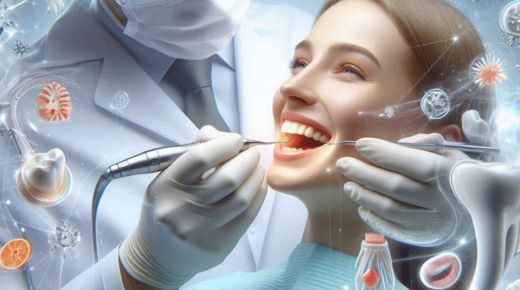
Air abrasion, a revolutionary technique in modern dentistry, has transformed the way dental professionals approach oral care. This minimally invasive method utilizes compressed air and fine abrasive particles to precisely remove tooth decay, prepare teeth for restorations, and improve oral health. By eliminating the need for traditional drilling, air abrasion reduces anxiety, preserves healthy tooth structure, and provides a more comfortable experience for patients.
With its numerous benefits, including increased accuracy, reduced risk of damage, and improved bonding, air abrasion adopted by the Fresno family dentist has become an indispensable tool for optimal oral health, redefining the standards of dental care.
What is air abrasion?
Air abrasion, also known as microabrasion or kinetic cavity preparation, is a dental technique that utilizes a stream of compressed air and fine abrasive particles to remove tooth decay, prepare teeth for restorations, and improve oral health. This minimally invasive method involves passing abrasive particles, typically silica or aluminum oxide, through a handheld device at high velocity, allowing dentists to precisely target and remove decayed or damaged tooth material. The abrasive particles are precisely controlled, allowing for selective removal of tooth structure, while preserving surrounding healthy tissue.
What are the benefits of using air abrasion in dental practice?
Air abrasion offers the following benefits in dental practice:
- Minimally Invasive: Air abrasion is a conservative approach that preserves healthy tooth structure, reducing the need for extensive drilling.
- Pain-Free: Air abrasion is often pain-free, eliminating the need for anesthesia in many cases.
- Reduced Anxiety: The gentle, non-invasive nature of air abrasion helps alleviate patient anxiety.
- Increased Accuracy: Air abrasion allows for precise removal of decayed tooth material.
- Faster Procedures: Air abrasion streamlines dental procedures, reducing treatment time.
- Improved Bonding: Air abrasion prepares the tooth surface for better bonding with restorative materials.
- Reduced Risk of Damage: Air abrasion minimizes the risk of damaging surrounding teeth or tissues.
- Cost-Effective: Air abrasion can reduce the need for costly restorations.
Advantages over traditional drilling
- Less Heat Generation: Air abrasion produces minimal heat, reducing damage to surrounding tissues.
- Less Vibration: Air abrasion eliminates the vibration associated with traditional drilling.
- Less Noise: Air abrasion is significantly quieter than traditional drilling.
What are the limitations and contraindications for air abrasion?
The limitations and contraindications of air abrasion include the following:
Limitations
- Depth of removal: Air abrasion is limited to removing surface lesions or shallow decay.
- Accessibility: Difficult-to-reach areas, such as posterior teeth, may be challenging.
- Large cavities: Air abrasion may not be effective for extensive decay.
- Hardened lesions: Air abrasion may struggle to remove hardened or calcified lesions.
- Tooth sensitivity: Air abrasion may exacerbate tooth sensitivity.
- Dentin removal: Air abrasion may not be suitable for removing large amounts of dentin.
- Ceramic or composite restorations: Air abrasion may damage these materials.
Contraindications
- Pulmonary conditions: Patients with respiratory issues (e.g., asthma, COPD) may be contraindicated.
- Cardiovascular conditions: Patients with certain heart conditions may be at risk.
- Pregnancy: Air abrasion may not be recommended during pregnancy.
- Implants or prosthetics: Air abrasion may damage these devices.
- Active periodontal disease: Air abrasion may exacerbate periodontal conditions.
- Tooth fractures: Air abrasion may not be suitable for teeth with fractures.
- Dental work in progress: Air abrasion may interfere with ongoing dental treatments.
- Tooth erosion: Air abrasion may worsen tooth erosion.
- Young patients: Air abrasion may not be suitable for pediatric patients.
Air abrasion has transformed the field of dentistry, offering a minimally invasive, pain-free, and cost-effective approach to oral care. Its benefits, including increased accuracy, reduced anxiety, and improved bonding, make it an attractive option for patients and dentists alike. As technology continues to evolve, air abrasion will remain an essential tool in the pursuit of optimal oral health.
